wrestling / Columns
Sports Entertainment Fiasco News Report 4.03.14
Greetings, folks, and welcome to Sean Kelly’s Sports Entertainment Fiasco!
With WrestleMania season upon us, we’re regularly treated to appearances from the SuperStars of yesteryear, and this year is no exception. Whether it’s Hulk Hogan, Ultimate Warrior, Roddy Piper, or even Mr. T – WWE goes above and beyond in bringing a touch of nostalgia to the showcase of the immortals. Keeping this in mind, I figured “why can’t 411mania do the same? ” So here I am, making an unscheduled cameo – right here! On 411mania!
That’s right, good ol’ Sean is popping back in to say howdy after a prolonged absence. Things have been good on my end. I have a beautiful, four month old baby girl – making me the proud father of three lovely little ladies. A lot of dopey people say things like “aw, poor daddy, you’re surrounded by women!” Please. It’s a f*cking JOY!
Work is busy but not overly so. I am working on a side project with a friend of mine that is coming together nicely. I’ve also been keeping up with the world of WWE – so get ready to hear some thoughts on all those goings on.
THE WWE NETWORK
Probably the biggest wrestling story of the year is the launch of the WWE Network. This is one of those milestones in wrestling history that could (will?) forever change the industry. If successful, the WWE Network will rank among top pivotal moments in wrestling lore like Wrestling being televised, Vince McMahon going national, the first WrestleMania and WWF buying WCW.
A lot of people focus on the obvious impact of the WWE Network – the vast wrestling library, the on demand nature of the service, the original content that WWE will be producing, and that’s all fine and dandy. But I haven’t seen anyone talk about the creative implications of the WWE Network model of doing business. So let’s zero in on that, shall we?
Note, I am not a wrestling historian or financial expert by any means, but I have done my fair share of reading on the subjects. If I make any mistakes in my analysis below, please feel free to correct me in the comments. Anywho, on with the show…
Back in the olden days of pro wrestling, the goal of wrestling was to put butts in seats. It was that simple. A performer was able to “draw money,” aka attract crowds, if their presence on the card translated to ticket sales. Before the sport of kings was televised, the creative storylines focused on getting the audience to come back to the arena next week to see what happens. The goal of the promoter was to have a full house, with tickets sales as the primary revenue stream. And the storylines reflected that. Angles were geared toward perpetual mini-cliffhangers, and if you wanted to see what happened next, you had to pay for the privilege to watch it live.
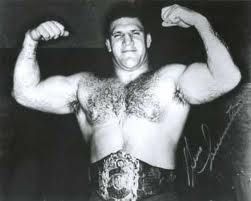
Then television came along, and at first this new technology was seen as another promotional tool to fill arenas. Over time, that would slowly change. As TV rights became more and more important, wrestling’s revenue streams diversified. No longer was the promoter looking to sell out arenas, he was looking to attract as many home viewer eyeballs as possible to get a piece of the advertising pie. After decades, the TV income stream would eclipse the money generated by live shows. However, the creative largely stayed the same – people needed to either buy a ticket or they now had the option to watch the show to see what happened next. The method was still the same – perpetually keep people interested enough to watch the next episode.
Then, a sea change. A new concept called pay-per-view took off in pro wrestling. Originally limited to closed circuit broadcasts, events like WrestleMania invaded households everywhere with the rise of cable set top boxes. For WWE, WrestleMania was the harbinger for “The Big Four,” aka The Royal Rumble, WrestleMania, SummerSlam and Survivor Series pay-per-views. These events were evenly spaced throughout the year, occurring about one per quarter, which gave the ‘E plenty of time to build up to a massive climax.
And that marks the first big change in WWE’s creative methodology. Instead of “keep them interested enough to watch the next episode,” it now became “keep them interested enough to watch the next episode, but build to a huge climax that people would pay $50 to watch unfold.” It’s a big challenge – how do you get people to pay for a product that they are accustomed to watching for free? The answer? You have to make it bigger, better and more spectacular. WWE was certainly able to accomplish this through the use of celebrities, marquee matches that were kept off free TV and storylines that had the freedom to build over several months. On free TV, talents like the Ultimate Warrior were fed an endless stream of jobbers to build his credibility, and if you wanted to see the Warrior fight, say, Hulk Hogan, you had to pay for the privilege.
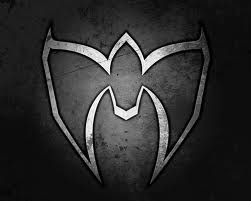
Then, WWE decided that four pay-per-views per year was just the beginning. Over time, they moved to a model where they would broadcast 12-13 pay-per-views a year. This had a tremendous impact on the creative process, as now instead of building to a huge climax every 3 months, stories were supposed to build to a climax every 4 weeks. In short, McMahon and company now had to convince you to shell out $50 every month, which is a huge ask. Still, for a while this model worked. Megastars like Stone Cold Steve Austin, The Rock, Shawn Michaels, Undertaker, Mankind, etc. were consistently putting on great matches in feuds that meant something. Instead of the “jobber of week” format, big stars competed against each other all the time on free TV, but the big payoffs would only take place on pay-per-view. Like him or not, but Vince Russo’s “crash TV” style of storytelling was a perfect fit for the new monthly pay-per-view concept. For several years, WWE did a great job selling monthly PPVs with the balls to the wall, anything goes mentality that defined the Attitude Era.
But then a few things happened that would change the pay-per-view landscape. First, most of the megastars that carried the company either left or became occasional performers. Toss in the fact that WWE has done a terrible job of building new stars, and we have a major creative problem on our hands. Pay-per-views became endless rehashes of, for example, John Cena vs. Randy Orton. Guys like the Miz and R-Truth were given main event opportunities, but those fizzled out and we are still left with the same guys who rose to prominence ten years ago. This gives the company limited short term creative options to sell pay-per-views, and fan interest, and subsequently buyrates, suffered as a result.
(If you’ll permit me to go off on a tangent – John Cena first became a world Champion nine years ago at WrestleMania XXI and has reigned supreme ever since. With no clear heir to his throne – no offense, Daniel Bryan – and his relatively young age, John Cena is on track to have a main event reign longer than Hulk Hogan and second to only Bruno Sammartino! His “era” has been nine years running and shows no sign of slowing down. Unbelievable!)
Anyway, back to the subject at hand, which is the evolution of WWE’s creative process. There has been another huge factor in dropping PPV buyrates, and that is the advent of internet streaming. WWE’s audience may not be the most sophisticated in the world, but they sure are a tech savvy bunch. If you combine a suffering economy with the ease and convenience of live streaming, you get a nasty sucker punch to the company’s bottom line. Increasingly, fans seem to justify streaming WWE PPVs with the logic of “I don’t have $50 to give them, and the event’s gonna suck anyway, so what does it matter?” The toxic combination of poor storytelling, internet streaming and a horrible economy have dealt the WWE a huge blow to their bottom line. So what’s a company to do?
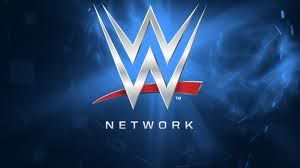
In an interesting twist, WWE decided to take advantage of the very internet that has been hurting them with the launch of the WWE Network. Using an “over the top” model, WWE programming past, present, and future will be streamed to internet-connected devices for the low price of $9.99 a month. The sweetener here is that they will be giving fans the ability to watch all pay-per-views through the network. Instead of asking fans to shell out $600 a year on PPV events alone, WWE is now asking them to shell out a relatively paltry $120 for all PPV events and access to an on demand wrestling library the likes of which has never been seen. While this does unquestionably offer their fans tremendous value, I am concerned with the creative implications this may have on WWE storylines.
Let’s say you take the leap and subscribe to the WWE network. Now you’re locked in for six months. You start watching classic programming, re-living the glory days of wrestling from when you were a kid. Or perhaps you like watching the original programming, like WWE Countdown or Legends of Wrestling. If those things alone are enough to keep you subscribing, then, in theory, the quality of current storylines almost doesn’t matter. If having access to all the other content is enough to keep you paying $9.99 a month, then generating interest in pay-per-views becomes irrelevant.
Think about it – for a long time, WWE’s creative goal was to get people interested enough to actively purchase their events for $50 every month. Now, the bar has been significantly lowered. With the WWE Network, all that WWE creative has to do is keep you interested just enough to prevent you from cancelling your subscription. That is a huge difference. It’s like the difference between courting a beautiful woman to go home with you versus keeping your wife happy enough to avoid divorce. The gap in required effort is tremendous.
My concern is that between the lack of incentive to coax us into buying PPVs and the relatively weak competition, WWE creative will get complacent and rest on their laurels, even more so than they do today. If their goal is to keep fans happy just enough to not cancel their WWE Network subscription, then their lack of effort will result in even more lackluster storylines.
However, there is also tremendous opportunity in this new model. If WWE does not need to do the hard sell to generate interest in purchasing pay-per-views, they have a newfound freedom to experiment with their talent. Do you really think that it’s a coincidence that John Cena is not in a main event match at WrestleMania the very same year that people can watch the event through the network? If WWE had to sell WM XXX for $60-$70 a pop, you’d be damn sure that John Cena would be in the last match of the show. Since WrestleMania 21, John Cena has been in either a championship match or a marquee (aka Rock) match at the Showcase of the Immortals. That’s because people will pay $60 to see Cena in a big match. However, since WWE knows that people will have the WWE Network anyway, this year they can put Cena up against a newcomer like Bray Wyatt and not worry about a drop in revenue.

So interestingly enough, the biggest beneficiaries in the WWE Network creative model could be talents like Bray Wyatt and Daniel Bryan. With the WWE Network, we’ve come full circle. Main eventers don’t have to sell $50 events anymore. They just need to fill up a building and get enough eyeballs every week to watch RAW and SmackDown. Someone like Daniel Bryan may not yet have enough star power to pull off major buyrates, but he certainly has enough to fill an arena and get people watching free TV. Since McMahon doesn’t need to worry about buyrates anymore, it makes the decision to pull the trigger on a huge push for an unproven talent so much easier for the company. Without the sword of Damocles known as buyrates hanging over the company’s head anymore, the creative team can relax a bit and try new things without worrying about losing money. That kind of creative freedom, if utilized, has the potential to generate some refreshing new storylines that WWE never would have tried before.
So there you have it. Will the WWE Network lead to storyline complacency, or will WWE embrace the creative freedom that this new model brings by trying different, riskier stories? Only time will tell.
PUNK’D
Another big story in the wrestling world is CM Punk’s walkout on WWE. Now, many of you know that while I enjoy Punk as a performer, I have often been critical of his childishness in the past. Who can forget Punk spewing homophobic insults at a fan in Australia? Or when he punched a fan in the face at RAW? (The wrong guy, no less). So it came as little surprise to me when I heard that Punk walked out on WWE over unknown issues.
Speculation is that he was upset with his placement in the WrestleMania card. Apparently, the Best in the World was slotted to face Triple H at WM XXX, which didn’t sit too well with the Straight Edge Superstar. Despite the fact that Triple H was bestowing the honor upon Punk of facing the company’s top star (in Hunter’s mind) at the biggest show of the year, it seems that Punk was upset that his dream of main eventing WrestleMania eluded him yet again and walked out. Perhaps extreme physical and mental burnout contributed to his walkout as well. At the end of the day, we will never know what really happened until one of the main players tells us their version of the story.

In my opinion, this is real, not an angle. I also don’t think that Punk will be returning at WrestleMania in any fashion. I also don’t think burnout was a huge factor here, because Punk recently had an extended leave to deal with that very issue. Without knowing Punk’s specific list of grievances, it’s impossible to give a meaningful opinion on this topic. However, I’ll let you know my thoughts based on what little information is available.
Despite my prior umbrage with CM Punk, I’m actually a little torn on this one. On one hand, Punk was extremely unprofessional in walking out on the company. He is a contracted talent and should see his contract through to the end. I don’t know the particulars of Punk’s contract – perhaps there were a minimum number of dates required and he’s already fulfilled them. Even if that were the case, simply walking out is not a mature response. The professional thing would be to argue your case and at least give some notice. “Taking your ball and going home,” as Triple H would say, is not the right course of action. The smart thing to do would be to use your grievances as leverage in a contract re-negotiation, but that didn’t happen.
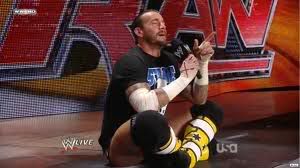
All that being said, it takes real balls to do what Punk did. He must have left a lot of money on the table by walking out during WrestleMania season. Someone motivated by greed would have worked the event, cashed the check, and then walked out. Standing up for yourself based on pure principle is a rare thing, and there’s a kind of romantic courage in what Punk did. By leaving at a time where he had the most to gain, he’s making a big statement – “I care more about what I believe in than any amount of money you could throw at me.” Wow. If only the rest of us were able to make such a statement. This is a great example of life imitating art – WWE has given us so many anti-authority storylines over the years and now they have to deal with one in real life as well. Many have criticized Punk for being selfish and “hurting the business.” Just stop it already.
This brings me to something that irritates me to no end. I am constantly annoyed by the mixed messages successful pro wrestlers spout in their interviews. Take the following platitudes often spoken by top guys:
“You need to give back to the business”
“You have to do right by the other guys in the locker room”
“Protect the business. It’s bigger than all of us”
“I was held back because of the politics with [main event wrestler]”
Versus:
“I’m not in this business to make friends. I’m in it to make money”
“If you’re not scratching and clawing to take the top spot away from the other guy, you got no business being a pro wrestler”
“When you’re on top, everyone else is trying to take your spot. You need to do everything you can to hold onto your spot”
“Guys who don’t make it lack that ruthless aggression to become a top star”
And so on. Make up your freaking minds! You can’t have it both ways, guys! Either everyone is altruistic and should be motivated by what’s best for pro wrestling overall, or everyone lives in a Darwinist struggle for position and payouts. There are guys like Brock Lesnar, Hulk Hogan and Ultimate Warrior who looked out for number one and get criticized for being too selfish. Enough already. Let’s stop throwing stones at people for trying to succeed, okay? The goal of every wrestler isn’t to protect professional wrestling. It’s to make it to the top and stay there as long as possible. The end.
Anyway. Vince McMahon is not CM Punk’s father. His role is not to look out for Punk’s best interests. The only person in that entire company that will look out for what’s best for CM Punk is CM Punk. And that’s why I have no issue with Punk doing just that. He doesn’t owe WWE anything – he’s made them a lot of money and they’ve made him a wealthy man. “Protecting the business” is propaganda designed to keep talent egos in check and establish control over people who dare to act out of line.
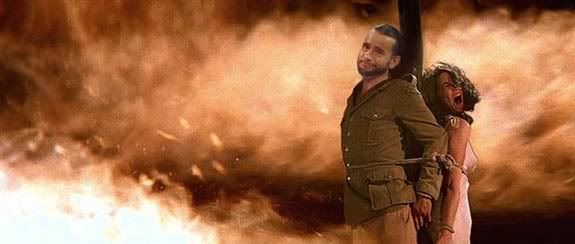
I predict that Punk will eventually return, but only after some concessions on the part of McMahon and company. Hopefully, this can lead to some broader improvement in the product. If Punk’s walkout leads the creative team to give up their out-of-touch, pigheaded stubbornness that drives most of their writing, we will all benefit from that.
So good luck to Punk. I may think he’s a big douche but that doesn’t mean I can’t agree with him or wish him well. I hope he finds happiness in whatever he does next, although I don’t think Punk is the kind of guy that can ever be truly happy.
YOU’RE IN FOR A REAL TWEET
And of course, follow all the 411 stuff on Twitter! #spon
http://www.twitter.com/411mania
http://www.twitter.com/411wrestling
http://www.twitter.com/411moviestv
http://www.twitter.com/411music
http://www.twitter.com/411games
http://www.twitter.com/411mma
SIGNING OFF
It was nice to get back into the writing thing. I hope to do this every so often in the future as time permits. Thanks for reading, everyone!
This is Sean.
More Trending Stories
- Backstage Update on WWE’s Plans for WrestleMania 41, Possible Move to March or May
- Tony Khan Addresses CM Punk’s Claims That He Paid for His Medical Care for Torn Triceps Injury
- Eric Bischoff Wouldn’t Put Money On Chances Of Vince McMahon Starting A New Wrestling Company
- Oklahoma Athletic Commission Gives AEW ‘Warning’ Over Nyla Rose Match, Rose Responds







